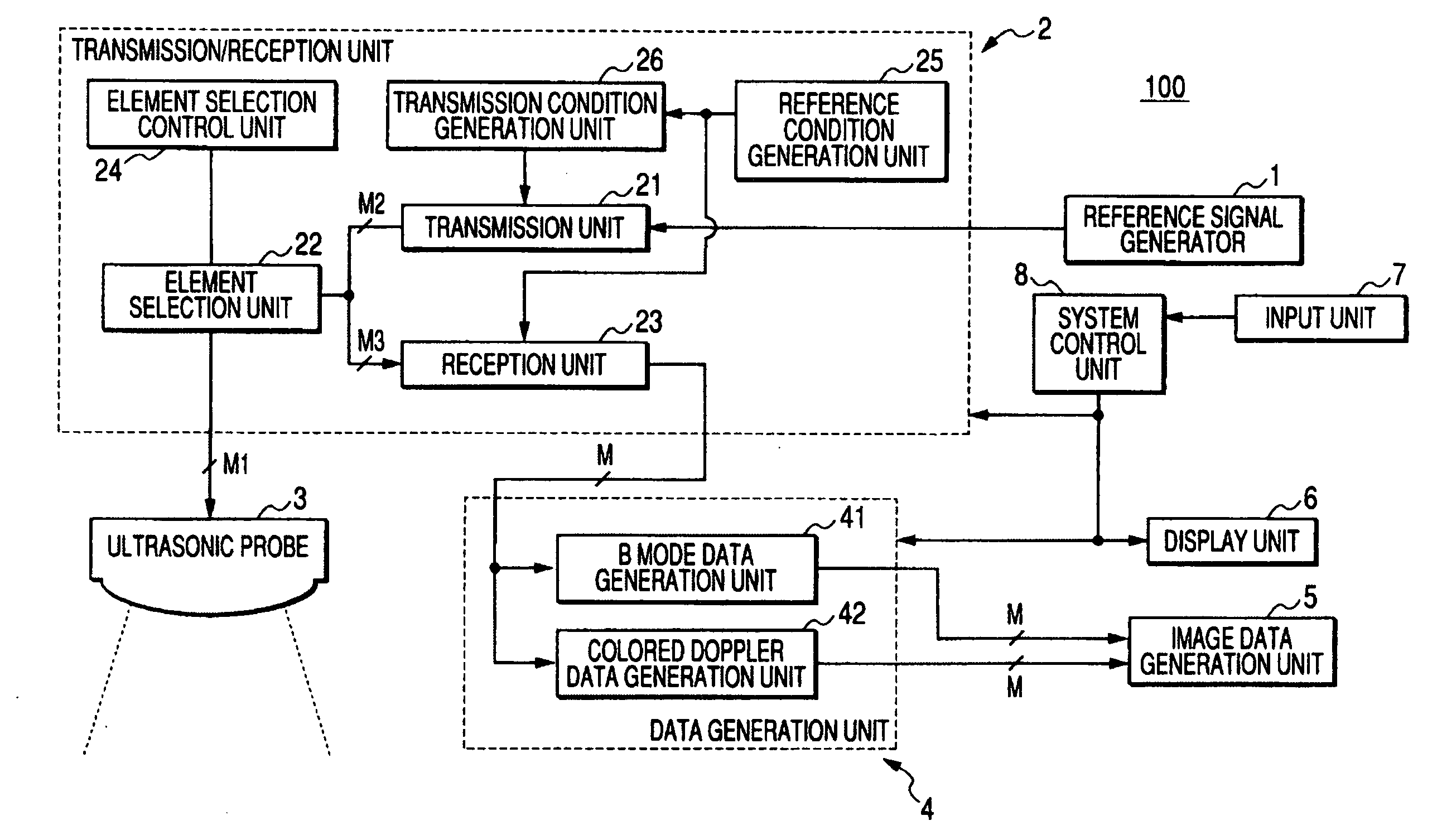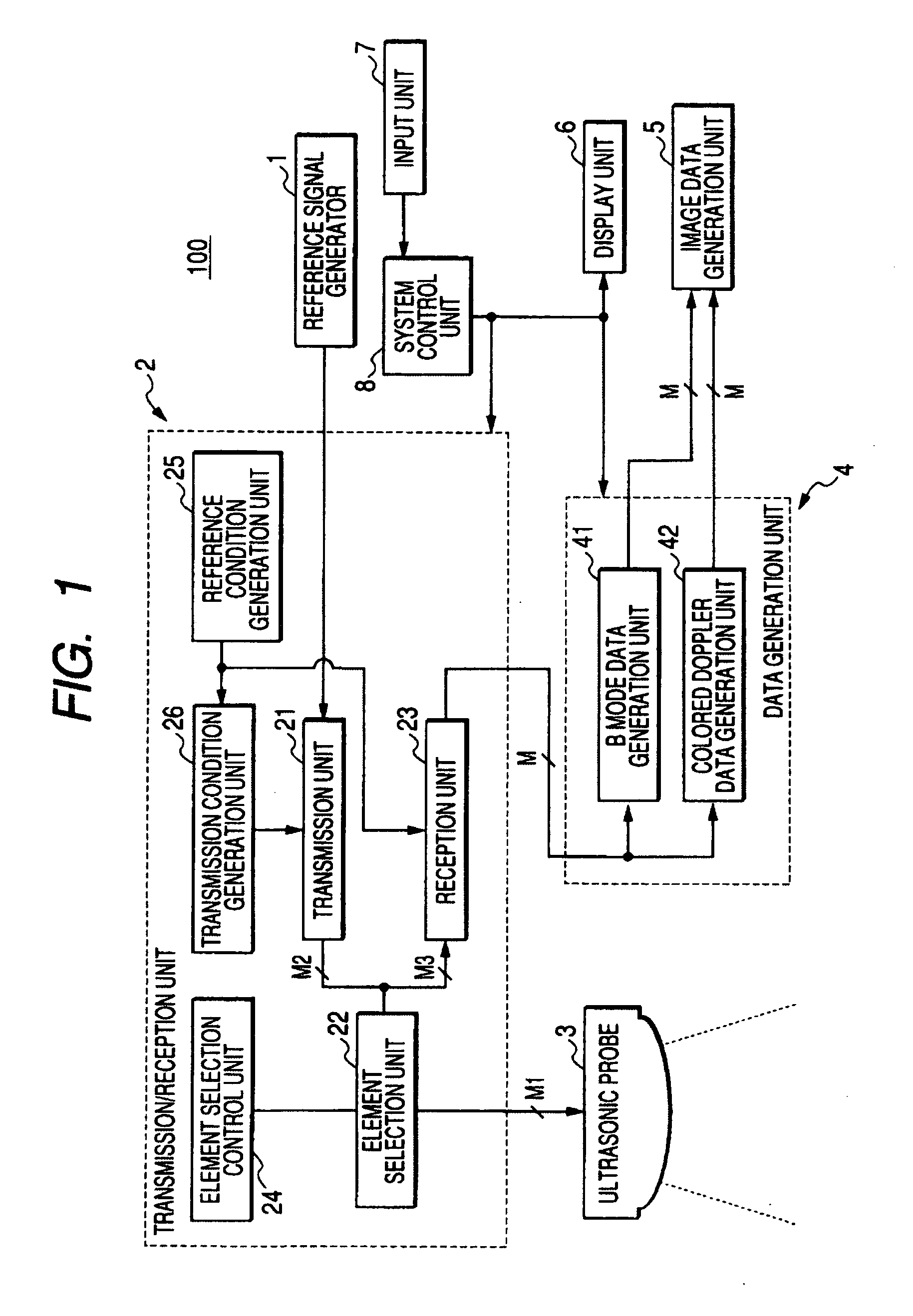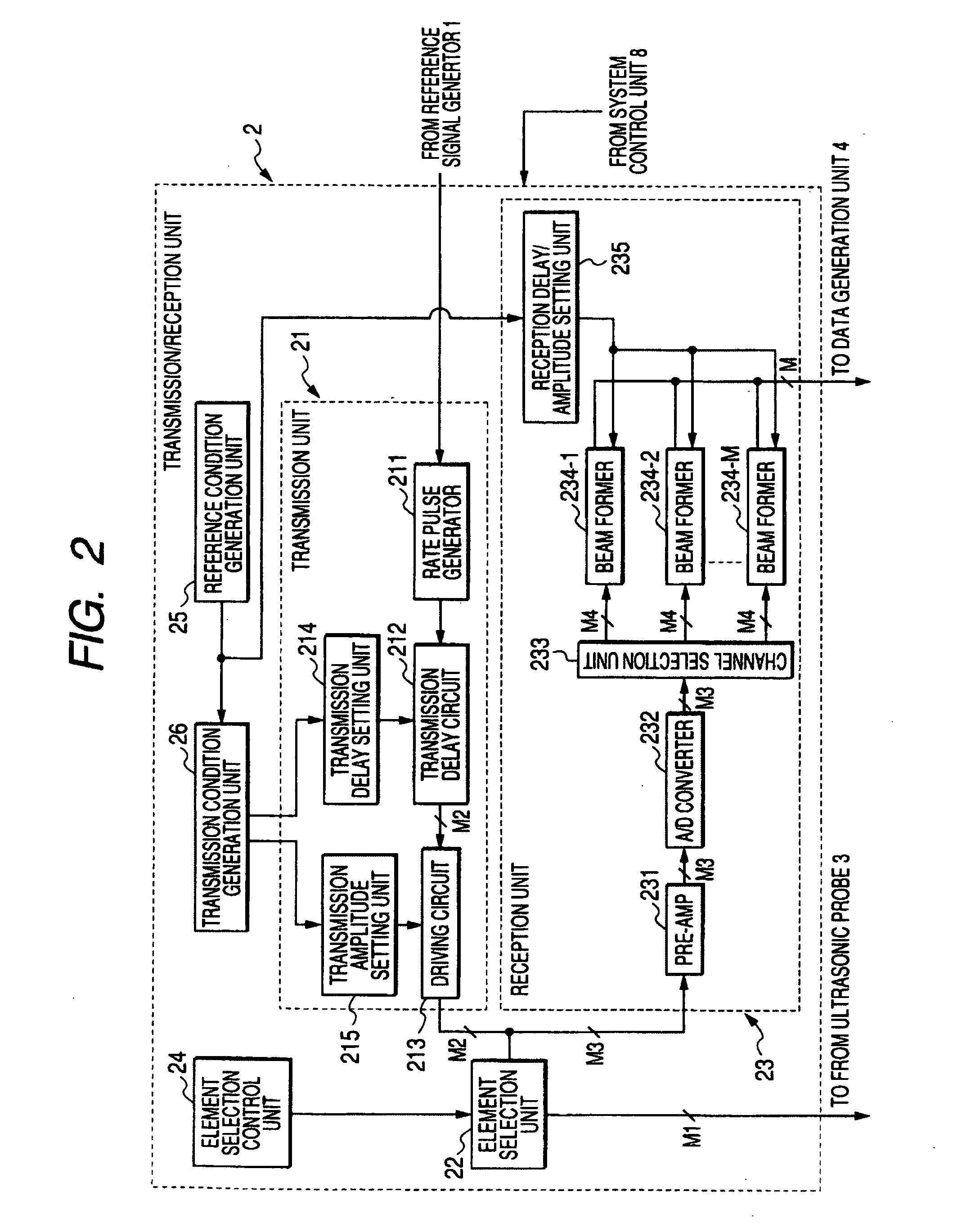Ultrasonic diagnostic apparatus and ultrasonic transmission method
- Summary
- Abstract
- Description
- Claims
- Application Information
AI Technical Summary
Benefits of technology
Problems solved by technology
Method used
Image
Examples
first embodiment
[0047] In the present invention described below, when simultaneous and parallel reception is performed using a convex scanning ultrasonic probe in which transducer elements are one-dimensionally arranged on a convex surface, an acoustic transmission field having uniform and suitable beam width in a lateral direction is formed by controlling delay time and driving amplitude of driving pulses (driving signals) supplied to a transmission transducer element group including a plurality of adjacent transducer elements.
[0048] In this case, the transmission conditions (transmission delay condition and transmission amplitude condition) for determining the delay time and the driving amplitude of driving pulses supplied to the transducer elements of the transmission transducer element group is set on the basis of the reference conditions (reference delay condition and reference amplitude condition) in a non-simultaneous and parallel reception using the transmission transducer element group.
[0...
second embodiment
[0140] As described above, an acoustic transmission field substantially equivalent to the acoustic transmission field shown in FIG. 7 can be obtained by driving the transducer elements P1 to PM0 by the driving pulse Hp(m) based on the transmission delay condition τp(m) and the transmission amplitude condition Ap(m) generated by Expression 9. However, in the second embodiment, the lateral direction X in FIG. 7 is substituted with the angle θ and ΔM is substituted with Δθ.
[0141] That is, the transmission condition generation unit 26a generates the transmission delay condition τp(m) and the transmission amplitude condition Ap(m) through the above-mentioned calculations using the reference delay condition τpo(m) and the reference amplitude condition Ao(m) for transmission supplied from the reference condition generation unit 25a, and supplies the result to the transmission delay setting unit 214a and the transmission amplitude setting unit 215a of the transmission unit 21a. The transmis...
PUM
 Login to View More
Login to View More Abstract
Description
Claims
Application Information
 Login to View More
Login to View More - R&D
- Intellectual Property
- Life Sciences
- Materials
- Tech Scout
- Unparalleled Data Quality
- Higher Quality Content
- 60% Fewer Hallucinations
Browse by: Latest US Patents, China's latest patents, Technical Efficacy Thesaurus, Application Domain, Technology Topic, Popular Technical Reports.
© 2025 PatSnap. All rights reserved.Legal|Privacy policy|Modern Slavery Act Transparency Statement|Sitemap|About US| Contact US: help@patsnap.com



